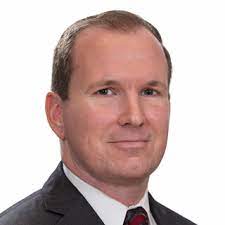With Morgan Downey, Head of Exchange Traded Derivatives for the Americas, and Kevin Sweeney, Head of Cross-Asset Trading and Electronic Product Development, Société Générale
When Societe Generale focused on updating its trading and execution strategies, it didn’t initially make equities its starting point. Prior to the pandemic, it initially focused on its derivatives trading platforms, which is somewhat the reverse of how most trading programs progress.
When SocGen spoke with Traders a few years ago about its strategic investments in its Global Execution Services, it was focused on electronic futures, options and equities.
A lot has happened since 2019, and we caught up with Morgan Downey, Head of Exchange Traded Derivatives for the Americas, and Kevin Sweeney, Head of Cross-Asset Trading and Electronic Product Development, to discuss how they see the evolution of trading and algorithms’ place in the financial ecosystem progressing post-pandemic.
How would you describe the state of electronic trading in financial markets today and how was it affected by recent events?
Morgan Downey:

In electronification and automation, clients have definitely ramped up considerably over the last two years. It wasn’t just the banks impacted and wasn’t only related to the pandemic. We saw the same situations across clients in 2020, and the pandemic accelerated trends that were already taking place in the markets as far as electronification and ability to work remotely, even though this was relatively new to trading desks. So, when the requests came in last year from clients making sure their people could work remotely, that required brokers to be even more proactive and responsive to them.
Kevin Sweeney:
And that electronic evolution paid off very well for clients that made those investments. But this evolution also needs good communities of companies and groups that work together and have long-standing relationships. It was that evolution of technology and a good dose of trust that have been built during this evolution that really paved the way for success when the pandemic happened.
How have these trends informed your own evolution in execution strategy?
Morgan Downey:
One of the bigger upgrades that we did to our Nova product on the derivative side was to add more algos on exchange-supported calendar spreads, as exchanges began offering more reduced-tick spreads. It’s something we’ve been fairly familiar with in the U.S. markets now for a number of years. But demand really started taking off as reduced ticks were offered by some of the European exchanges over the last two years. And we’ve seen liquidity greatly increase in electronic trading on the derivatives side; contracts were trading approximately 20% electronic two years ago and now are reaching up to 60% traded on screen.
Kevin Sweeney:

Our evolution started well before pandemic, but like much of the industry it was amplified by the COVID crisis. You saw more and more equity liquidity executed off-exchange, and that trend has continued, even in the wake of the volatility that came onto the market with the Coronavirus selloff last year. So, there was a continuous rise for both ATSs, dark pools, and single-broker platforms, where clients needed to access liquidity quickly. And we’ve had a big focus on addressing those needs, which we’re seeing industry-wide.
How has your approach differed?
Morgan Downey:
Our main execution platform was launched in the derivatives markets first and was tailored to derivatives markets. That is a little bit different than what you hear from most corners of the markets, which tend to evolve on the equities side first. However, it made sense for us given the execution needs from our derivatives clients.
Kevin Sweeney:
There have been significant structural changes in the U.S. equity markets with the expansion of retail flow and the number of smaller sized orders, so it was very, very well timed that we invested in more dynamic and flexible algo solutions.
What is driving the current evolution in the markets and what has been the impact of the pandemic?
Kevin Sweeney:
There are definitely several different market trends. A more remote, electronic world is coming into play in the wake of the pandemic. More trading floors are closing across asset classes. You have multitude of asset managers that are working remotely extensively or returning to a hybrid model. A lot of the quant funds are having a renaissance. So, many different market factors are at play as the financial industry finds its way, but one thing the industry agrees on is that the further electronification of the markets will only accelerate.
Have algorithms been changed by this evolution?
Morgan Downey:
Hand-in-hand with electronic trading, algorithms are an increasingly important part of today’s markets. If you look back at it, algorithms actually helped keep organization in the market last year. With proper risk controls and supervisory efforts, the algos at work in the markets today actually make the market more confident, more organized, rather than disruptive. There’s always going to be strategies and traders that try to do things where there could be a disruption. Algos have evolved to look for these situations and act on them accordingly.
Kevin Sweeney:
The notion that algos are rigid blocks directing market moves without needed context or reactivity is woefully outdated. These are not the same algos or frameworks at work a decade ago. Today the algorithms being used to direct electronic trading are complex and reacting, exhibiting the same resiliency and adaptability as the trading and execution systems in which they operate.
Where do algos go from here?
Kevin Sweeney:
Algos will continue to become more dynamic because they have to be in today’s market environment. Algos need to pivot, algos need to be dynamic, and that’s what makes it exciting. And that’s also what makes them advantageous, especially in a post-COVID environment. When you have markets reacting to volatility events or quickly-moving events such as during a presidential election or any kind of political change or big announcement or a rebalance, the algo engine has to adapt dynamically.
Morgan Downey:
Your algos have to be smart enough, and you have to have the right control tools in place to be able to recognize when markets are changing on the fly. Algos must have the ability to go from a more reactive to a proactive state when markets are moving in your favor. Markets will continue to evolve as they learn new situations that they haven’t dealt with before. It will be electronic solutions that will help solve these problems in the future.





